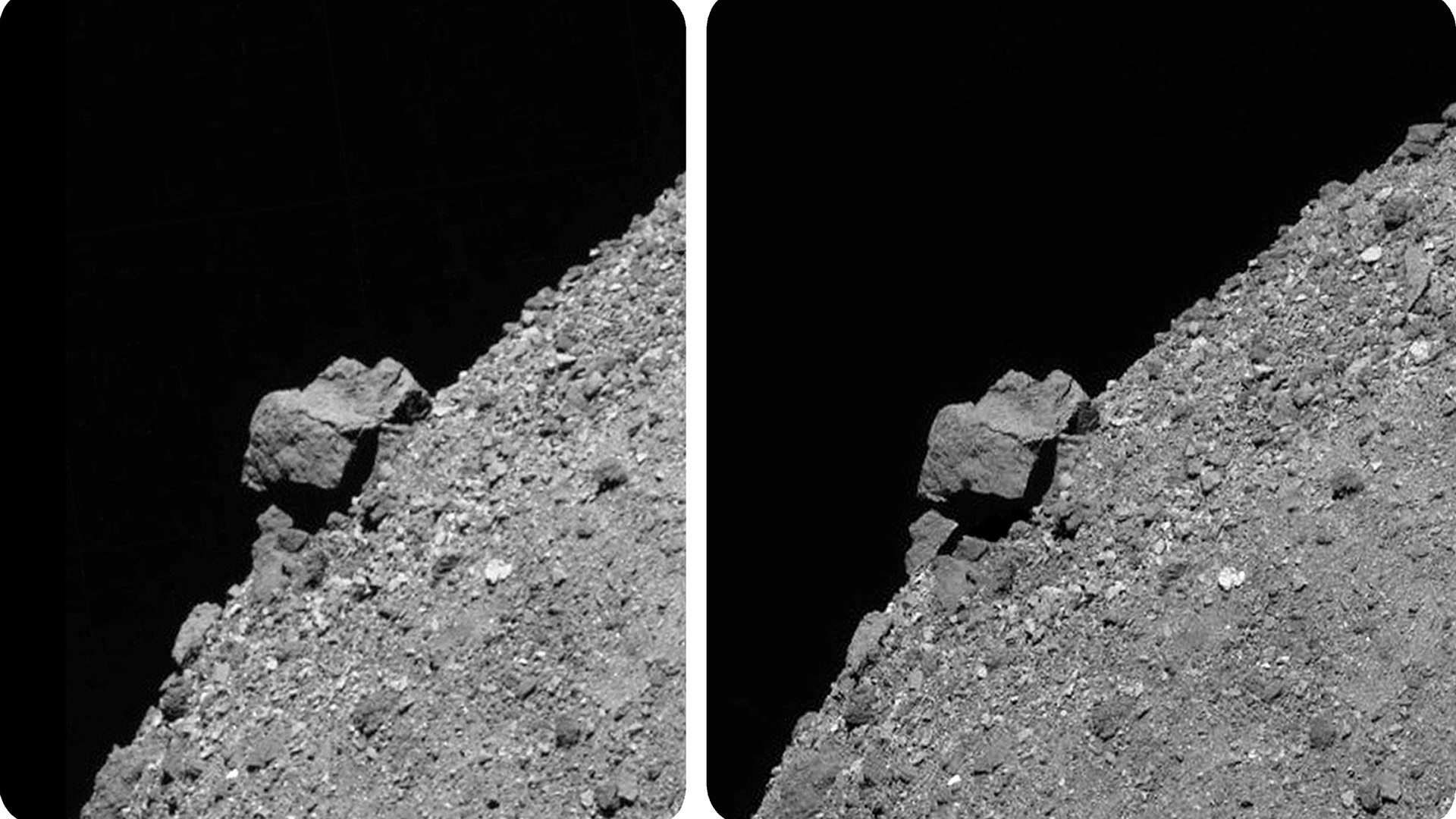Queen guitarist Brian May to release a book of 3D images of asteroid Bennu

Queen guitarist and astrophysicist Brian May is about to release a book of 3D photographs of the near-Earth asteroid Bennu based on images gathered by NASA's OSIRIS-Rex spacecraft, which snagged samples from the space rock in October 2020.
Apart from playing guitar with one of the most famous rock bands in history, May also has a PhD in astronomy and is known for his keen interest in stereoscopic photography — photography that simulates the ability of human eyes to perceive space in three dimensions.
The 76-year-old rock legend cooperated on the book with OSIRIS-REx (short for "Origins, Spectral Interpretation, Resource Identification, Security-Regolith Explorer") principal investigator and planetary scientist Dante Lauretta.
Published by May's London Stereoscopic Company, "Bennu 3-D: Anatomy of an Asteroid" is described as the first-ever 3D atlas of an asteroid, and it aims to tell the story of the fascinating space rock to non-specialist audiences.
Related: Queen's Brian May will rock you with this stereo image of asteroid Ryugu
NASA regards Bennu as one of the most dangerous asteroids in the solar system. The space rock has a roughly 1-in-1,800 chance of hitting Earth in the next 300 years.
When NASA's OSIRIS-REx mission briefly touched down on the asteroid in October 2020 to collect a small sample to bring back to Earth, it discovered a squishy surface so loose that it nearly swallowed up the probe. Still, the spacecraft managed to collect about 2 ounces (60 grams) of regolith from Bennu, which it is set to deliver to Earth this September.
Breaking space news, the latest updates on rocket launches, skywatching events and more!
Previously, the Japanese missions Hayabusa 1 and Hayabusa 2 collected and brought to Earth dust from asteroids Itokawa and Ryugu in 2010 and 2020, respectively.

OSIRIS-REx spent 2 1/2 years studying the 1,722-foot-wide (525 meters) Bennu between December 2018 and May 2021. During that time, the probe took thousands of images of the asteroid and its surface. Some of these images were processed by May and mathematical researcher Claudia Manzoni to feature in the book, which will be released on Thursday (July 27) and is currently available for pre-order on Amazon.
May has cooperated with the OSIRIS-REx team since January 2019, according to NASA. In March of that year, NASA released the first 3D images of Bennu processed by the musician, showing an enormous, 170-foot-wide (52 m) boulder jutting from Bennu’s southern hemisphere. The 3D visualizations created by May and Manzonni even helped the OSIRIS-REx team select a suitable landing site on the treacherous asteroid, whose surface is strewn with boulders and smaller rocks.

Tereza is a London-based science and technology journalist, aspiring fiction writer and amateur gymnast. Originally from Prague, the Czech Republic, she spent the first seven years of her career working as a reporter, script-writer and presenter for various TV programmes of the Czech Public Service Television. She later took a career break to pursue further education and added a Master's in Science from the International Space University, France, to her Bachelor's in Journalism and Master's in Cultural Anthropology from Prague's Charles University. She worked as a reporter at the Engineering and Technology magazine, freelanced for a range of publications including Live Science, Space.com, Professional Engineering, Via Satellite and Space News and served as a maternity cover science editor at the European Space Agency.
